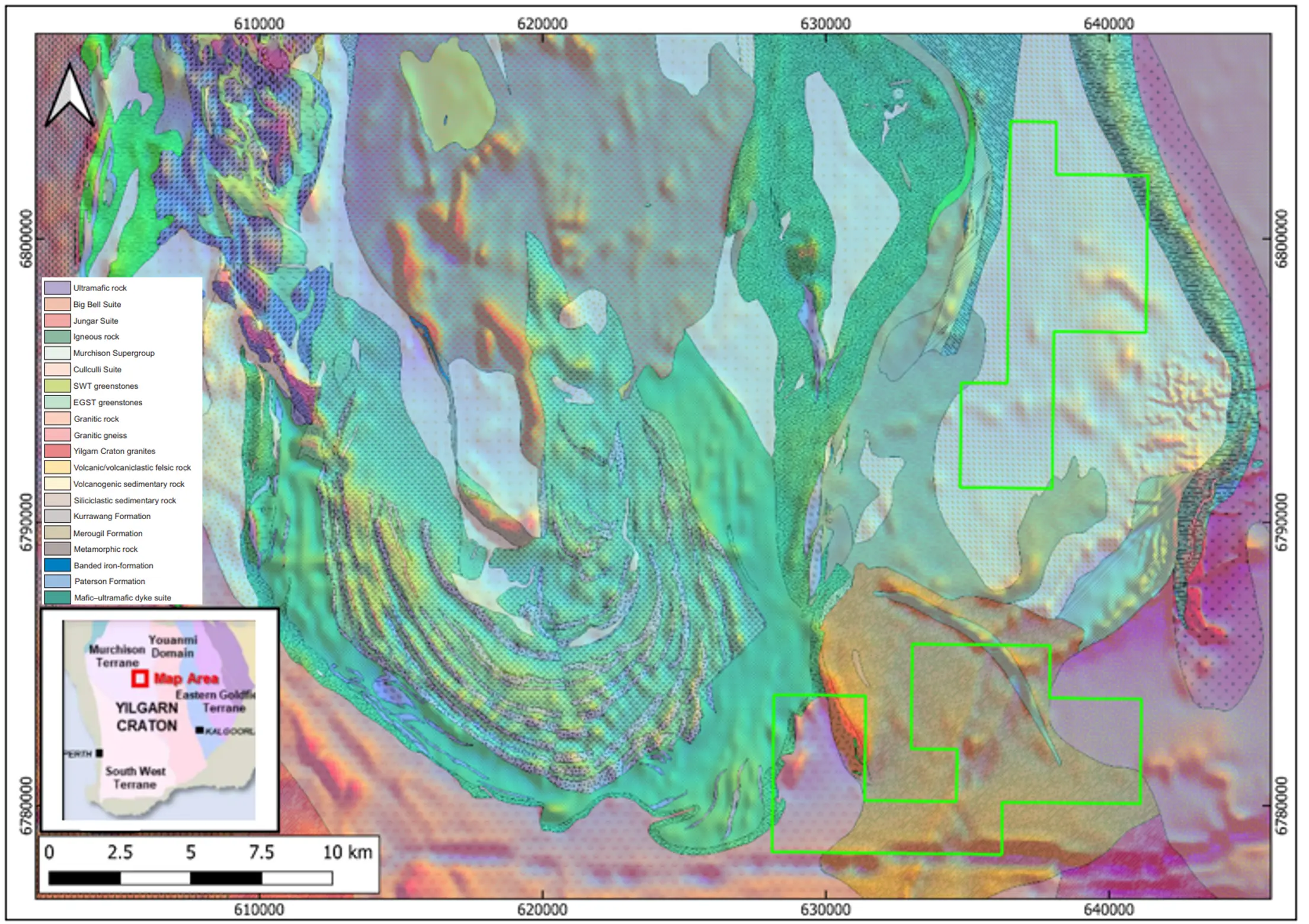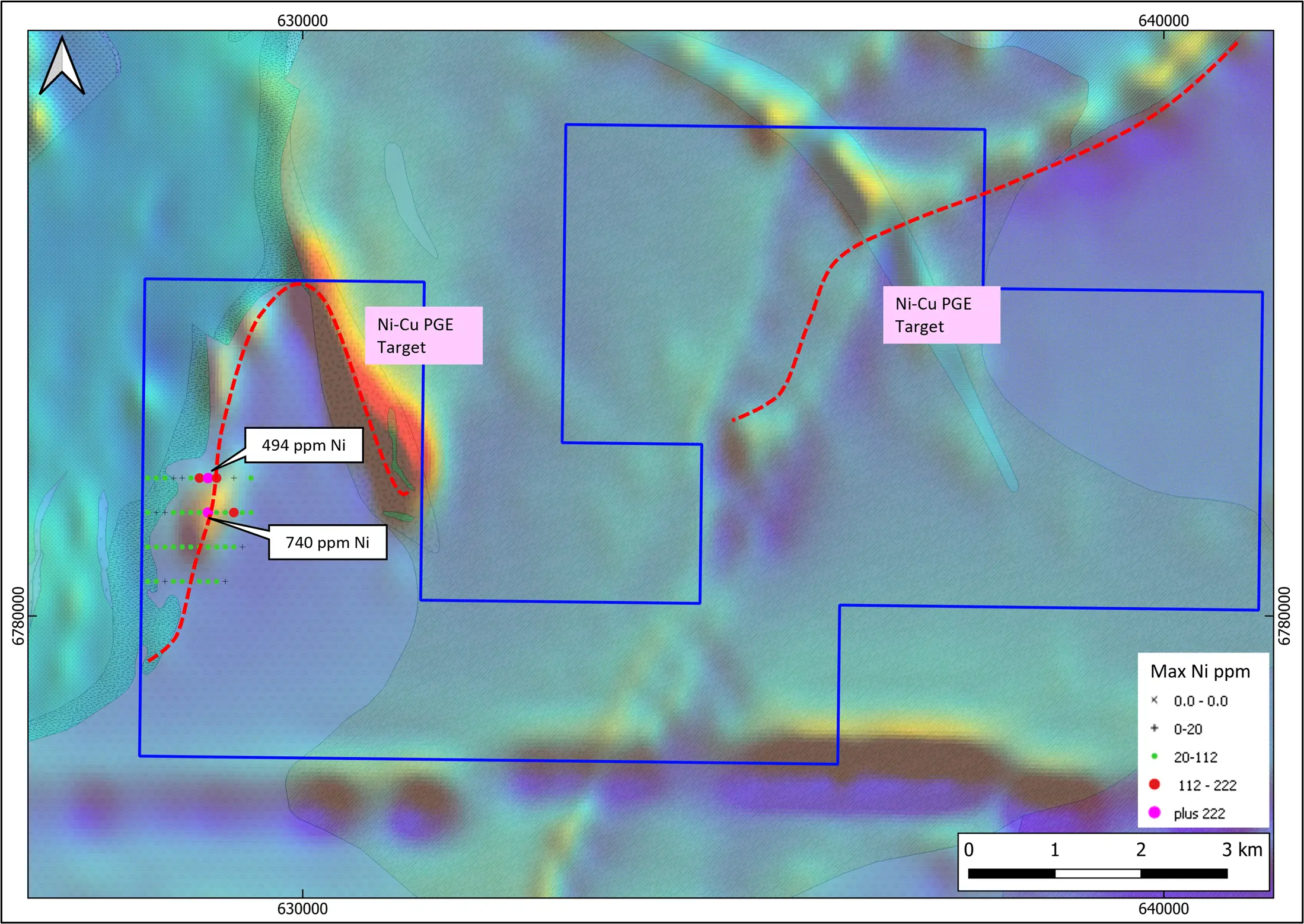The Fence Line tenure encompasses the eastern portion of the Narndee Layered Intrusive Complex (LIC), a part of the Windimurra Group of layered mafic intrusions. The Windimurra Complex is the largest layered intrusive system in Australia
The Narndee LIC comprises rhythmically layered ultramafic and gabbroic sequences, covering a surface area of about 700 km² and representing a cumulative stratigraphic thickness of 6 to 9 km. It has undergone subsequent synclinal folding and structural dislocation, with two principal geological domains recognized within: the Milgoo Layered Series (MLS) and the Kockalocka Layered Series (KLS). The MLS is dominated by ultramafic cumulates and gabbronorite, while the KLS consists mainly of gabbronorites.
Interpretation of magnetic and geological data suggests that the base of the Narndee LIC may reside near the southern end of E59/2633 and represent the location of a prospective basal feeder or basal embayment. These basal structures can be favourable for Cu-Ni-PGE sulphide accumulation and are potentially represented by magnetic anomalies.
In 2018 Sante Fe completed a soil program over a portion of the Narndee LIC on E59/2633, where the LIC terminates and is interpreted to be at the base of the complex. Results were encouraging as the highest nickel value of 740ppm was identified at this basal contact location. Anomalous values were also identified in the next northern line of soils. These results potentially support the interpretation of a nickel rich body (interpreted to be a magnetic ultramafic unit) at depth and is highly encouraging.
The Fence Line tenure encompasses the eastern portion of the Narndee Layered Intrusive Complex (LIC), a part of the Windimurra Group of layered mafic intrusions. The Windimurra Complex is the largest layered intrusive system in Australia
The Narndee LIC comprises rhythmically layered ultramafic and gabbroic sequences, covering a surface area of about 700 km² and representing a cumulative stratigraphic thickness of 6 to 9 km. It has undergone subsequent synclinal folding and structural dislocation, with two principal geological domains recognized within: the Milgoo Layered Series (MLS) and the Kockalocka Layered Series (KLS). The MLS is dominated by ultramafic cumulates and gabbronorite, while the KLS consists mainly of gabbronorites.

Interpretation of magnetic and geological data suggests that the base of the Narndee LIC may reside near the southern end of E59/2633 and represent the location of a prospective basal feeder or basal embayment. These basal structures can be favourable for Cu-Ni-PGE sulphide accumulation and are potentially represented by magnetic anomalies.
In 2018 Sante Fe completed a soil program over a portion of the Narndee LIC on E59/2633, where the LIC terminates and is interpreted to be at the base of the complex. Results were encouraging as the highest nickel value of 740ppm was identified at this basal contact location. Anomalous values were also identified in the next northern line of soils. These results potentially support the interpretation of a nickel rich body (interpreted to be a magnetic ultramafic unit) at depth and is highly encouraging.



